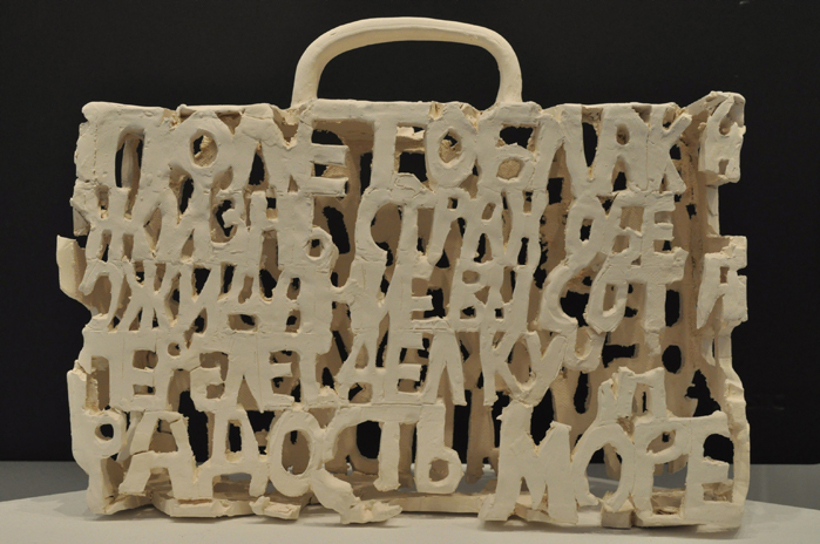Migration and Mobility
Language Arts - Grade 10
This unit of inquiry is not a recipe book but rather a launchpad to inspire new BIG IDEAS. We encourage you to use and/or modify one, or several of the BIG IDEAS below. Adapt it to the grade/ ability level of your students.
Enduring Understandings
Migration and mobility shape the world
Guiding Questions
How do immigration and mobility impact Canadian society?
Mind Opening
Choose or devise practices to encourage students to be open to new experiences and ways of thinking in your classroom. For example, the MindUP in-school program.
Discovery and Inspiration:
Launch the Project
• Introduce the Theme: Present the Enduring Understanding and Guiding Questions using vocabulary that is appropriate for your grade level.
• About Vancouver Biennale: Play a short video.
• Create Project Space: Brainstorm ideas to make the project theme visual and visible using bulletin boards, and/or a project corner to share relevant materials and inquiry questions and processes.
Reference Resources:
• Introduction to Sculpture and Public Art Unit Plan for information on how art has evolved over time and the unique experience sculptures and/or public art brings
• Vancouver Biennale 2014-2016 Exhibition Theme: Open Borders / Crossroads Vancouver
• Vancouver Biennale Residency: Crossing Borders Maa’bar (Tammam Azzam, Syria).
Other Resources
To facilitate an engaging discussion on the topic of the fluidity of Canadian identity:
Watch Asian-Canadian Self-Identity
Learning to Learn:
Art Inquiry
Make a visit to Crossing Borders Maa’bar and encourage students to freely explore and interact with the art pieces individually and in groups. This Art Inquiry process enables the students to practice observing, describing, interpreting, and sharing visual information and personal experiences. Use the Art Inquiry Worksheet (PDF) to guide and capture their ideas and impressions. Customize or create your own Art Inquiry Worksheet as appropriate for your project and class needs.
After mindfully observing the installation, have the students reflect on the guiding questions on immigration and mobility. How do the artists represent mobility and movement? Are there questions or answers in the art work?
Shared Insights
• Sharing Art Inquiry Experience: Ask students to share the Art Inquiry Worksheet responses in class.
• Artist Themes – Research: In small groups students rotate between information stations detailing the artist’s life and work. Station topics include: (1) education and training; (2) lifetime of artwork; (2) materials and processes; (3) beliefs and values. At each station, students answer questions and complete a task. For example, at the station “life’s work” students might plot the artist’s various installations on a map of the world.
• Artist Themes – Tableaux Activity: Lead a discussion on how borders always been contested and revealed through ever-changing complexities between nations and people. How does this artwork reflect physical and cultural borders? Ask the students to think about the content in the luggage and relate to the culture and values that immigrants bring with them when they just arrive in a new country. Would they feel in control of their destiny? In groups of four or five, have students brainstorm words/phrases to reflect the thoughts of new immigrants. Select a key word/phrase and represent it in a frozen image and ask the class to guess what they represent in their tableaux.
Inquiry Challenges
Tracing Migratory Family Routes/Roots (Journey Map – Autogeography): Have students trace and map out their ancestry as far back as they can, identify migration and mobility in their lives and make a personal connection to a topic.
Literature Circle: Novel list: Try to Remember (Iris D. Gomez); Tangled Threads (Pegi Deitz Shea); Obasan (Joy Kogawa); The Jade Peony (Wayson Choy); Return to Sender (Julia Alvarez); Kiffe Kiffe Tomorrow (Faiza Guene)
Read a different novel on migration in groups of five to six students. Each student is to have a specific task in the group. Each group is to present the novel and background/analytical/literary research on the cultural focus of the novel.
Student Creations and Taking Action
Students and teachers decide on medium and methods to communicate their insights on immigration in Canada in relation to literature. Consider use of multi-literacies – posters, website, montages, written essays/poems, film and audio, dance, visual arts or theatre.
Consider a public performance at the Crossing Borders Maa’bar: Select and adapt a performance of a powerful/moving excerpt from their novel.
Reflection
• Teacher and students can reflect on their entire learning process by revisiting the Enduring Understanding and relevant Guiding Questions.
• How did the unit of study open inquiry, create cross–curricular learning opportunities and/or apply learning to real life situations? Has this unit of inquiry changed your opinions, values and world view? In what ways, if any, has it helped you grow as a learner?
Ideas for Cross-Curricular Access
• Home Economics: Cultural origins of menus, recipes, ingredients, meal etiquette… as represented in Canada. Have students research various culture and customs of assigned region/country in groups. Propose a menu of dishes that they will prepare for the class/week and provide cultural context of the proposed meals.
• Mathematics – Patterns and Relations: Have students discuss and agree on the time period for this inquiry. Graph immigration trends/patterns in Canada and/or a province. Refer to Statistics Canada as resource.
• Social Studies – Identity, Society, Culture: Canada from 1815 to 1914: Have students investigate the influence of immigration on Canadian society and the factors that have contributed to a changing national identity. Explore and investigate various immigration policies and prepare a visual presentation on policies. “If they were the Prime Minister, how might they change the policy?”
Credits
Written by: Louise Chan and Natasha Randhawa, 2013 UBC Secondary School Teacher Candidates
Edited by: Jennifer Massoud, Secondary School Teacher
©2013 Vancouver Biennale
Related Material
 Alcuin College Gr 3/4 and Gr 10
Alcuin College Gr 3/4 and Gr 10